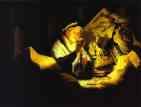living the intepretation....
So the process of modeling geography begins with analyzing and interpreting scientific formulas and methods. Sounds complicated huh… but really.... GIS is makes it so much easier and systematic. Results are interpreted in various ways for us to understand GIS output better. We need the interpretation to model our world better and to engineer our lives. GIS helps us in many cool ways… transportation, engineering, communication, research, environment, housing, health, utilities and my favourite... urban planning / living.
There are four traditional types of spatial analysis: topological overlay and contiguity analysis, surface analysis, linear analysis, and raster analysis...

Jimi Hendrix, Smoking, London (1967) by Gered Mankowitz
Can we say anything else??? :D














